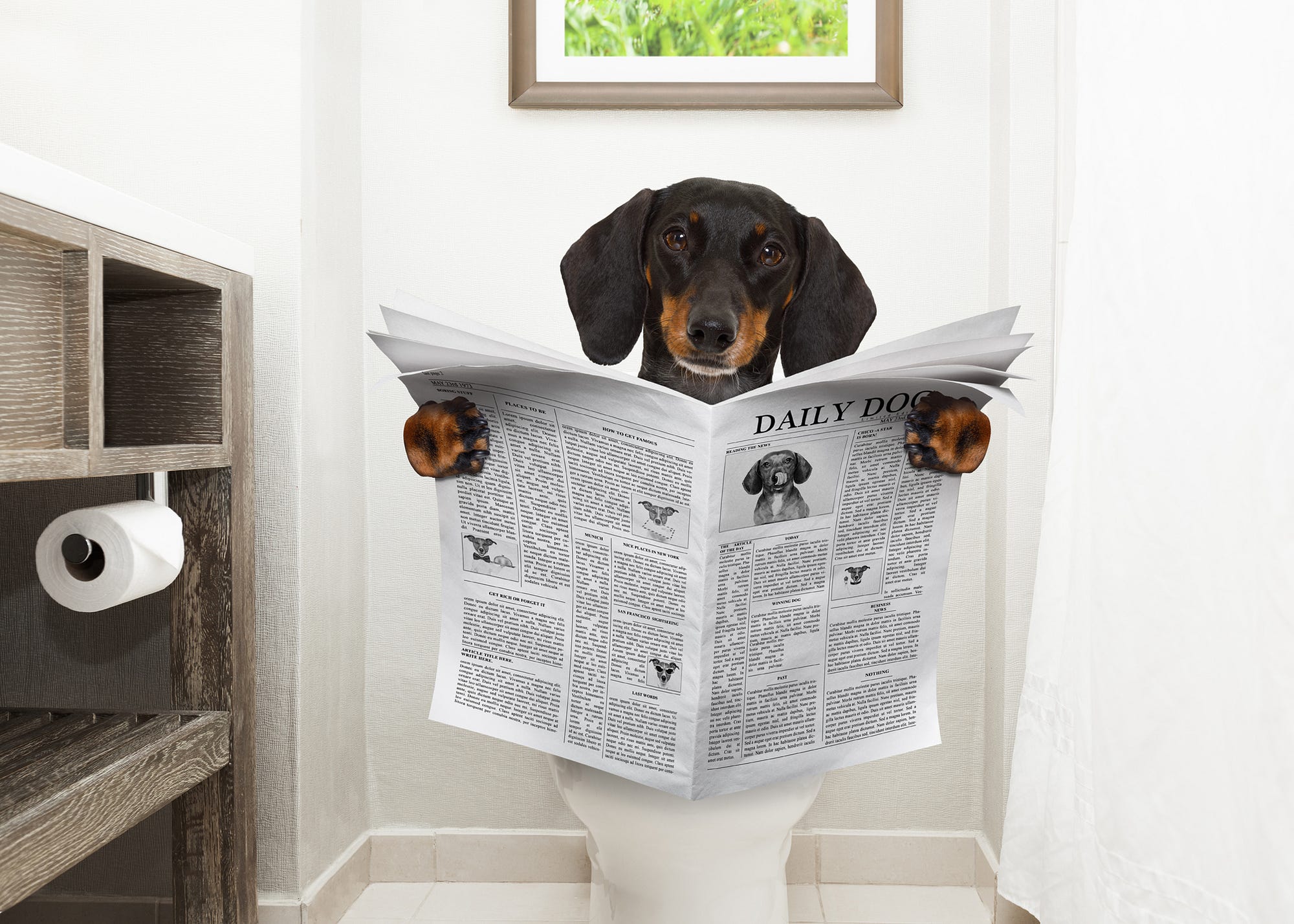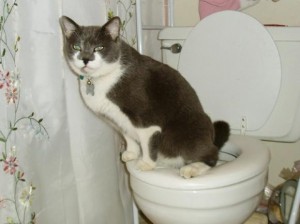Understanding the Hazards of Flushing Animal Waste Down the Toilet
Understanding the Hazards of Flushing Animal Waste Down the Toilet
Blog Article
We've stumbled on this post on Don't Flush Your Pets Poo Down The Loo, Vet Warns below on the internet and felt it made sense to quickly share it with you on this site.

When it concerns throwing away waste, especially animal waste, many individuals typically resort to the convenient choice of flushing it down the toilet. Nonetheless, this seemingly very easy option can have major repercussions for the setting and public health. In this write-up, we'll explore why flushing animal waste down the commode is a bad idea and provide different methods for proper disposal.
Intro
Appropriate garbage disposal is crucial for maintaining ecological sustainability and public health. While it may appear safe to purge animal waste down the bathroom, it can bring about various problems, both for the environment and human well-being.
Risks of flushing animal waste
Ecological impact
Purging pet waste presents harmful germs and pathogens right into rivers, which can adversely affect water communities. These microorganisms can pollute water sources and damage marine life, disrupting delicate ecosystems.
Public health worries
Pet waste has damaging bacteria such as E. coli and Salmonella, which can present major wellness threats to humans. Flushing pet waste down the bathroom can contaminate water products, causing the spread of conditions and infections.
Alternatives to flushing
Rather than purging animal waste down the commode, there are numerous alternate disposal methods that are much more eco-friendly and sanitary.
Composting
Composting pet waste is an environment-friendly means to deal with it. By composting, raw material is broken down right into nutrient-rich soil, which can be used to fertilize yards and plants.
Landfill disposal
Disposing of pet waste in a land fill is one more choice. While not as environmentally friendly as composting, it is a much safer alternative to flushing, as it prevents the contamination of water resources.
Family pet garbage disposal systems
There are specialized pet dog garbage disposal systems offered that safely and hygienically get rid of pet waste. These systems often utilize enzymes to break down waste and remove smells.
Steps to proper animal waste disposal
To make certain appropriate disposal of pet waste, follow these actions:
Scooping and bagging waste
Consistently scoop and bag animal waste utilizing eco-friendly bags. This avoids waste from polluting the setting.
Utilizing assigned waste containers
Dispose of bagged animal waste in designated waste bins, such as compost bins or garbage dump bins. Prevent flushing it down the bathroom in any way prices.
Cleaning litter boxes and family pet locations consistently
On a regular basis clean can and pet dog locations to stop the accumulation of waste and germs. Use pet-safe cleansing products to preserve health.
Benefits of correct disposal approaches
Taking on appropriate disposal approaches for animal waste supplies numerous advantages:
Minimized environmental pollution
Appropriate disposal approaches lower the risk of environmental pollution, safeguarding rivers and communities from contamination
Lessened danger of water contamination.
By avoiding flushing pet waste down the toilet, the danger of water contamination is substantially reduced, securing public health.
Improved cleanliness and health
Proper disposal techniques advertise far better hygiene and health, developing a safer environment for both human beings and pets.
Conclusion
Finally, flushing pet waste down the toilet is dangerous to the environment and public health. By taking on alternative disposal approaches and following proper waste monitoring practices, we can reduce the adverse influence of animal waste and contribute to a cleaner, much healthier planet.
What To Do With Dog Poo – The Do's And Don'ts Of Disposing Of Faeces
Dog poo bins
Some councils provide dedicated dog waste bins in popular dog-walking areas that can take dog poo that has been bagged but you can legally dispose of dog waste in any public litter bin, as long as it is securely bagged. This also applies to your wheelie bin at home.
Do not flush
Water companies do not recommend flushing dog faeces down the toilet because certain parasites can survive the water processing treatment and are potentially harmful to humans. You should also never consider flushing dog poo that has been bagged down the toilet as the bags will not break down and instead create severe blockages in the sewage system.
In the woods
The Forestry Commission promotes a ‘stick and flick’ method for dealing with waste in the woods. This means finding a stick and using it to flick any poo from off the path so that it is out of the way of other walkers. You could also bury it as long as it is not in an area where there might be livestock.
Livestock
Parasites found in dog poo can be transmitted to livestock if they inadvertently eat infected faeces that has been left on grazing land. This could result in the death of sheep or abortion in cattle so you should always make sure you pick up your dog’s waste in fields where livestock could be present.

On a regular basis clean can and pet dog locations to stop the accumulation of waste and germs. Use pet-safe cleansing products to preserve health.
Benefits of correct disposal approaches
Taking on appropriate disposal approaches for animal waste supplies numerous advantages:
Minimized environmental pollution
Appropriate disposal approaches lower the risk of environmental pollution, safeguarding rivers and communities from contamination
Lessened danger of water contamination.
By avoiding flushing pet waste down the toilet, the danger of water contamination is substantially reduced, securing public health.
Improved cleanliness and health
Proper disposal techniques advertise far better hygiene and health, developing a safer environment for both human beings and pets.
Conclusion
Finally, flushing pet waste down the toilet is dangerous to the environment and public health. By taking on alternative disposal approaches and following proper waste monitoring practices, we can reduce the adverse influence of animal waste and contribute to a cleaner, much healthier planet.
What To Do With Dog Poo – The Do's And Don'ts Of Disposing Of Faeces
Dog poo bins
Some councils provide dedicated dog waste bins in popular dog-walking areas that can take dog poo that has been bagged but you can legally dispose of dog waste in any public litter bin, as long as it is securely bagged. This also applies to your wheelie bin at home.
Do not flush
Water companies do not recommend flushing dog faeces down the toilet because certain parasites can survive the water processing treatment and are potentially harmful to humans. You should also never consider flushing dog poo that has been bagged down the toilet as the bags will not break down and instead create severe blockages in the sewage system.
In the woods
The Forestry Commission promotes a ‘stick and flick’ method for dealing with waste in the woods. This means finding a stick and using it to flick any poo from off the path so that it is out of the way of other walkers. You could also bury it as long as it is not in an area where there might be livestock.
Livestock
Parasites found in dog poo can be transmitted to livestock if they inadvertently eat infected faeces that has been left on grazing land. This could result in the death of sheep or abortion in cattle so you should always make sure you pick up your dog’s waste in fields where livestock could be present.

I discovered that piece about Can You Flush Dog and Cat Poo Down the Toilet? while doing a search on the web. Are you aware of someone else who is very much interested in the topic? Please feel free to share it. Many thanks for taking the time to read it.
Source This Article Report this page